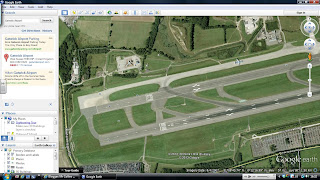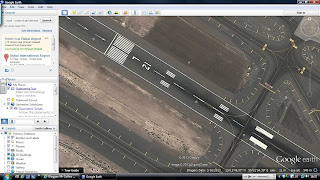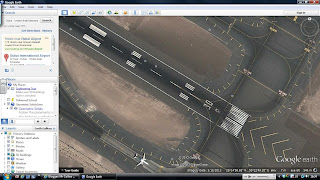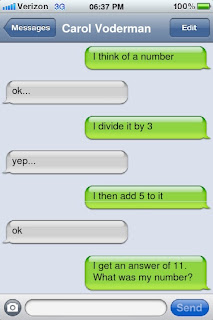പത്താം ക്ലാസിലെ ഫിസിക്സ് രണ്ടാം യൂണിറ്റായ വൈദ്യുതകാന്തിക പ്രേരണം എല്ലാ സ്ക്കൂളുകളിലും ഇതിനോടകം പഠിപ്പിച്ചു തീര്ന്നിട്ടുണ്ടാകും. ഈ പാഠഭാഗവുമായി ബന്ധപ്പെട്ട് ഇബ്രാഹിം സാര് തയ്യാറാക്കിയ ലളിതവും വിശദവുമായ പഠനക്കുറിപ്പുകള് മാത്സ് ബ്ലോഗ് ജൂലൈ മാസം പതിനേഴാം തീയതി ഒരു പോസ്റ്റിലൂടെ പങ്കുവെച്ചിരുന്നത് ഏവരും ഉപയോഗപ്പെടു ത്തിയിട്ടുണ്ടാകുമെന്നു കരുതട്ടെ. വൈദ്യുതകാന്തികപ്രേരണം എന്ന ഈ പാഠഭാഗത്ത് എസി ജനറേറ്റര്, ഡിസി ജനറേറ്റര്, ട്രാന്സ്ഫോര്മര് തുടങ്ങിയ ഒന്പത് വര്ക്കിങ് മോഡലുകളെക്കുറിച്ചാണ് ചര്ച്ച ചെയ്യുന്നതെന്ന് നമുക്കറിയാം. അക്ഷരങ്ങളിലൂടെ ഈ ആശയം മനസ്സില് പതിപ്പിക്കുന്നതിനു മുന്നോടിയായി ഈ വര്ക്കിങ്ങ് മോഡലുകളുടെ പ്രവര്ത്തനം കുട്ടികളെയൊന്ന് കാട്ടിക്കൊടുക്കാനായിരുന്നെങ്കിലോ? ആ ആശയം വളരെ വേഗത്തില് കുട്ടികളുടെ മനസ്സില് പതിയും. ഇതിന് അധ്യാപകരെ സഹായിക്കുന്നത് കമ്പ്യൂട്ടറും ഇന്റര്നെറ്റുമൊക്കെത്തന്നെയാണ്. ഈ ഐസിടി സാധ്യതകള് പരമാവധി പ്രയോജനപ്പെടുത്താന് സന്നദ്ധതയുള്ള അധ്യാപകര്ക്ക് ആവശ്യമായ പിന്തുണയുമായി വരികയാണ് കുളത്തൂപ്പുഴ ഗവ. ടെക്നിക്കല് ഹൈസ്ക്കൂളിലെ ഭൗതികശാസ്ത്രവിഭാഗം അധ്യാപകനായ നസീര് സാറും സോഫ്റ്റ്വെയര് എന്ജിനീയറായ ജിതേഷ് സാറും. ഇവര് ഒരു പ്രൊജക്ടിന്റെ ഭാഗമായി തയ്യാറാക്കിയ ആനിമേറ്റ് ചെയ്ത വീഡിയോകള് ഡൗണ്ലോഡ് ചെയ്യാനാകും വിധം ചുവടെ നല്കിയിട്ടുണ്ട്. അവ ഡൗണ്ലോഡ് ചെയ്തെടുത്ത് കുട്ടികള്ക്ക് കാട്ടിക്കൊടുക്കുമല്ലോ. ഇത്തരം സാധ്യതകള് നിങ്ങള്ക്കു പ്രയോജനപ്പെടുന്നുണ്ടോ? ഉണ്ടെങ്കില് നമുക്ക് ഇത്തരം പോസ്റ്റുകള് തുടര്ന്നും പ്രസിദ്ധീകരിക്കാം. വീഡിയോ ഫയലുകളോടൊപ്പം ഈ പാഠഭാഗത്തെ ആസ്പദമാക്കി മലയാളം മീഡിയത്തിലും ഇംഗ്ലീഷ് മീഡിയത്തിലും പഠിക്കുന്ന കുട്ടികള്ക്കു വേണ്ടി നസീര് സാര് തയ്യാറാക്കിയ ചോദ്യങ്ങളും ഉത്തരങ്ങളും ചുവടെ നല്കിയിട്ടുണ്ട്. അഭിപ്രായങ്ങളെഴുതമല്ലോ?
ഒരു ചാലകവുമായി ബന്ധപ്പെട്ട കാന്തികബലരേഖകള്ക്ക് വ്യതിയാനം സംഭവിക്കുമ്പോള് ചാലകത്തില് വൈദ്യുതി പ്രേരണം ചെയ്യപ്പെടുന്ന പ്രതിഭാസമാണ് വൈദ്യുതകാന്തികപ്രേരണം (Electromagnetic induction). ഇങ്ങനെയുണ്ടാകുന്ന വിദ്യുത്ചാലകബലത്തെ പ്രേരിതവിദ്യുത്ചാലകബലം എന്നും വൈദ്യുതിയെ പ്രേരിത വൈദ്യുതി എന്നും പറയുന്നു. ഇതേക്കുറിച്ചും ഇത് പ്രയോജനപ്പെടുത്തുന്ന ഉപകരണങ്ങളെക്കുറിച്ചുമെല്ലാമുള്ള ആനിമേറ്റ് ചെയ്തെടുത്ത വീഡിയോകളാണ് ചുവടെയുള്ളത്. എല്ലാ വീഡിയോകളും Download Video എന്ന ലിങ്കില് ക്ലിക്ക് ചെയ്ത് ഡൗണ്ലോഡ് ചെയ്തെടുക്കാം.
വൈദ്യുത കാന്തിക പ്രേരണം
ഒരു ചാലകവുമായി ബന്ധപ്പെട്ട കാന്തിക ഫ്ലക്സില് വ്യതിയാനം ഉണ്ടാകുന്നതിന്റെ ഫലമായി ചാലകത്തില് ഒരു emf പ്രേരണം ചെയ്യുന്ന പ്രക്രിയയാണ് വൈദ്യുതകാന്തിക പ്രേരണമെന്നു പറഞ്ഞല്ലോ. ഇതെങ്ങനെയെന്നാണ് ചുവടെയുള്ള വീഡിയോയില് ചിത്രീകരിച്ചിരിക്കുന്നത്.
EM Induction - Download VIDEO
AC ജനറേറ്റര്
വൈദ്യുത കാന്തിക പ്രേരണ തത്വം അനുസരിച്ച് യാന്ത്രികോര്ജ്ജത്തെ വൈദ്യുതോജ്ജമാക്കി മാറ്റുന്ന ഉപകരണമാണ് AC ജനറേറ്റര്.
AC Generator - Download VIDEO
AC Generator stages - Download VIDEO
DC ജനറേറ്റര്
DC വൈദ്യുതിലഭ്യമാക്കുന്ന ഉപകരണമാണ് DC ജനറേറ്റര്.
DC Generator - Download VIDEO
AC ജനറേറ്ററും DC ജനറേറ്ററും ഒരുമിച്ച് പ്രവര്ത്തിക്കുന്നത് കണ്ടു നോക്കൂ!
AC-DC Generator - Download VIDEO
ചലിക്കും ചുരുള് മൈക്രോഫോണ്
മൈക്രോഫോണില് ശബ്ദതരംഗങ്ങള്ക്ക് അനുയോജ്യമായി വോയിസ് കോയില് കമ്പനം ചെയ്യുന്നു. സ്വതന്ത്രമായി ചലിക്കാന് കഴിവുള്ള വോയിസ് കോയില് സ്ഥിതി ചെയ്യുന്നത് പ്രത്യേകമായി രൂപകല്പ്പന ചെയ്തിട്ടുള്ള ഒരു സ്ഥിരകാന്തത്തിന്റെ ധ്രുവങ്ങള്ക്കിടയിലാണ്.
Moving Coil - Download VIDEO
മ്യുച്വല് ഇന്ഡക്ഷന്
അടുത്തടുത്തായി സ്ഥിതി ചെയ്യുന്ന രണ്ട് കോയിലുകളിലൊന്നിലൂടെ വ്യതിയാനം സംഭവിക്കുന്ന വൈദ്യുതി പ്രവഹിക്കുമ്പോള് അതിന് ചുറ്റുമുള്ള കാന്തിക മണ്ഡലത്തിലന് മാറ്റമുണ്ടാകുകയും തല്ഫലമായി രണ്ടാമത്തെ കോയിലിലെ emf പ്രേരിതമാകുകയും ചെയ്യുന്ന പ്രതിഭാസമാണ് മ്യൂച്ചല് ഇന്ഡക്ഷന്.
Mutual Induction - Download VIDEO
ട്രാന്സ്ഫോര്മര്
മ്യൂച്ച്വല് ഇന്ഡക്ഷന് എന്ന തത്വം പ്രാവര്ത്തികമായിട്ടുള്ള ഉപകരണമാണ് ട്രാന്സ്ഫോര്മര്. രണ്ടുതരം ട്രാന്സ്ഫോര്മര് ഉണ്ട്.
Transformers - Download VIDEO
മോട്ടാര് തത്വം
കാന്തികമണ്ഡലത്തില് സ്ഥിതി ചെയ്യുന്ന വൈദ്യുത വാഹിയായ ചാലകം (conductor) ഒരു ബലത്തിന് വിധേയമാകന്നു. ഇതാണ് മോട്ടോര്തത്വം. ഫ്ലമിങ്ങിന്റെ ഇടതുകൈ നിയമം ഉപേയാഗിച്ച് ഈ ബലത്തിന്റെ ദിശ മനസിലാക്കാം.
Motor principle - Download VIDEO
ചോദ്യോത്തരങ്ങള്
മലയാളം മീഡിയത്തിലും ഇംഗ്ലീഷ് മീഡിയത്തിലും പഠിക്കുന്ന കുട്ടികള്ക്ക് വേണ്ടി തയ്യാറാക്കിയ ചോദ്യങ്ങളും ഉത്തരങ്ങളും ചുവടെ നല്കിയിരിക്കുന്നു. ലിങ്കില് ക്ലിക്ക് ചെയ്ത് അവ ഡൗണ്ലോഡ് ചെയ്തെടുക്കാം.
Malayalam Medium : Questions - Answers
English Medium : Questions - Answers
നിങ്ങളുടെ വിലയേറിയ അഭിപ്രായങ്ങള്ക്കായി കാത്തിരിക്കുന്നു.
ഒരു ചാലകവുമായി ബന്ധപ്പെട്ട കാന്തികബലരേഖകള്ക്ക് വ്യതിയാനം സംഭവിക്കുമ്പോള് ചാലകത്തില് വൈദ്യുതി പ്രേരണം ചെയ്യപ്പെടുന്ന പ്രതിഭാസമാണ് വൈദ്യുതകാന്തികപ്രേരണം (Electromagnetic induction). ഇങ്ങനെയുണ്ടാകുന്ന വിദ്യുത്ചാലകബലത്തെ പ്രേരിതവിദ്യുത്ചാലകബലം എന്നും വൈദ്യുതിയെ പ്രേരിത വൈദ്യുതി എന്നും പറയുന്നു. ഇതേക്കുറിച്ചും ഇത് പ്രയോജനപ്പെടുത്തുന്ന ഉപകരണങ്ങളെക്കുറിച്ചുമെല്ലാമുള്ള ആനിമേറ്റ് ചെയ്തെടുത്ത വീഡിയോകളാണ് ചുവടെയുള്ളത്. എല്ലാ വീഡിയോകളും Download Video എന്ന ലിങ്കില് ക്ലിക്ക് ചെയ്ത് ഡൗണ്ലോഡ് ചെയ്തെടുക്കാം.
വൈദ്യുത കാന്തിക പ്രേരണം
ഒരു ചാലകവുമായി ബന്ധപ്പെട്ട കാന്തിക ഫ്ലക്സില് വ്യതിയാനം ഉണ്ടാകുന്നതിന്റെ ഫലമായി ചാലകത്തില് ഒരു emf പ്രേരണം ചെയ്യുന്ന പ്രക്രിയയാണ് വൈദ്യുതകാന്തിക പ്രേരണമെന്നു പറഞ്ഞല്ലോ. ഇതെങ്ങനെയെന്നാണ് ചുവടെയുള്ള വീഡിയോയില് ചിത്രീകരിച്ചിരിക്കുന്നത്.
EM Induction - Download VIDEO
AC ജനറേറ്റര്
വൈദ്യുത കാന്തിക പ്രേരണ തത്വം അനുസരിച്ച് യാന്ത്രികോര്ജ്ജത്തെ വൈദ്യുതോജ്ജമാക്കി മാറ്റുന്ന ഉപകരണമാണ് AC ജനറേറ്റര്.
AC Generator - Download VIDEO
AC Generator stages - Download VIDEO
DC ജനറേറ്റര്
DC വൈദ്യുതിലഭ്യമാക്കുന്ന ഉപകരണമാണ് DC ജനറേറ്റര്.
DC Generator - Download VIDEO
AC ജനറേറ്ററും DC ജനറേറ്ററും ഒരുമിച്ച് പ്രവര്ത്തിക്കുന്നത് കണ്ടു നോക്കൂ!
AC-DC Generator - Download VIDEO
ചലിക്കും ചുരുള് മൈക്രോഫോണ്
മൈക്രോഫോണില് ശബ്ദതരംഗങ്ങള്ക്ക് അനുയോജ്യമായി വോയിസ് കോയില് കമ്പനം ചെയ്യുന്നു. സ്വതന്ത്രമായി ചലിക്കാന് കഴിവുള്ള വോയിസ് കോയില് സ്ഥിതി ചെയ്യുന്നത് പ്രത്യേകമായി രൂപകല്പ്പന ചെയ്തിട്ടുള്ള ഒരു സ്ഥിരകാന്തത്തിന്റെ ധ്രുവങ്ങള്ക്കിടയിലാണ്.
Moving Coil - Download VIDEO
മ്യുച്വല് ഇന്ഡക്ഷന്
അടുത്തടുത്തായി സ്ഥിതി ചെയ്യുന്ന രണ്ട് കോയിലുകളിലൊന്നിലൂടെ വ്യതിയാനം സംഭവിക്കുന്ന വൈദ്യുതി പ്രവഹിക്കുമ്പോള് അതിന് ചുറ്റുമുള്ള കാന്തിക മണ്ഡലത്തിലന് മാറ്റമുണ്ടാകുകയും തല്ഫലമായി രണ്ടാമത്തെ കോയിലിലെ emf പ്രേരിതമാകുകയും ചെയ്യുന്ന പ്രതിഭാസമാണ് മ്യൂച്ചല് ഇന്ഡക്ഷന്.
Mutual Induction - Download VIDEO
ട്രാന്സ്ഫോര്മര്
മ്യൂച്ച്വല് ഇന്ഡക്ഷന് എന്ന തത്വം പ്രാവര്ത്തികമായിട്ടുള്ള ഉപകരണമാണ് ട്രാന്സ്ഫോര്മര്. രണ്ടുതരം ട്രാന്സ്ഫോര്മര് ഉണ്ട്.
- സ്റ്റെപ്പ് അപ് ട്രാന്സ്ഫോര്മര്
- സ്റ്റെപ്പ് ഡൗണ് ട്രാന്സ്ഫോര്മര്
Transformers - Download VIDEO
മോട്ടാര് തത്വം
കാന്തികമണ്ഡലത്തില് സ്ഥിതി ചെയ്യുന്ന വൈദ്യുത വാഹിയായ ചാലകം (conductor) ഒരു ബലത്തിന് വിധേയമാകന്നു. ഇതാണ് മോട്ടോര്തത്വം. ഫ്ലമിങ്ങിന്റെ ഇടതുകൈ നിയമം ഉപേയാഗിച്ച് ഈ ബലത്തിന്റെ ദിശ മനസിലാക്കാം.
Motor principle - Download VIDEO
ചോദ്യോത്തരങ്ങള്
മലയാളം മീഡിയത്തിലും ഇംഗ്ലീഷ് മീഡിയത്തിലും പഠിക്കുന്ന കുട്ടികള്ക്ക് വേണ്ടി തയ്യാറാക്കിയ ചോദ്യങ്ങളും ഉത്തരങ്ങളും ചുവടെ നല്കിയിരിക്കുന്നു. ലിങ്കില് ക്ലിക്ക് ചെയ്ത് അവ ഡൗണ്ലോഡ് ചെയ്തെടുക്കാം.
Malayalam Medium : Questions - Answers
English Medium : Questions - Answers
നിങ്ങളുടെ വിലയേറിയ അഭിപ്രായങ്ങള്ക്കായി കാത്തിരിക്കുന്നു.


































